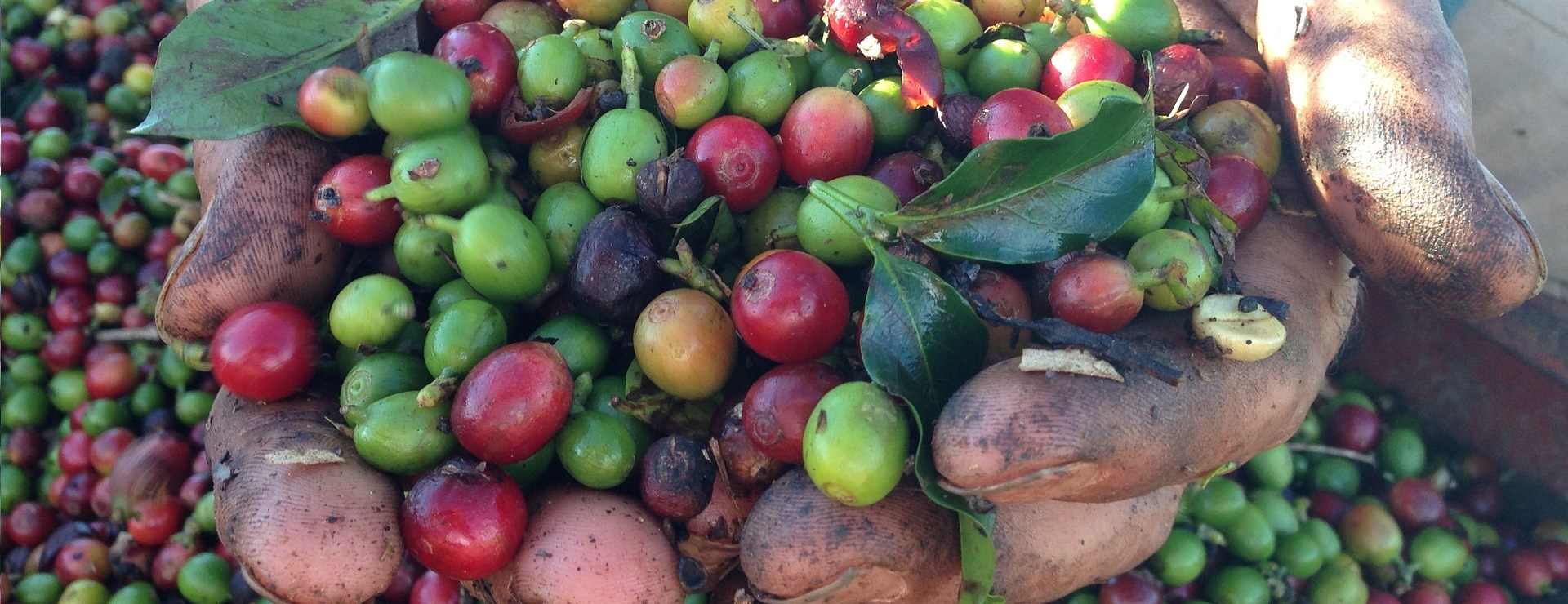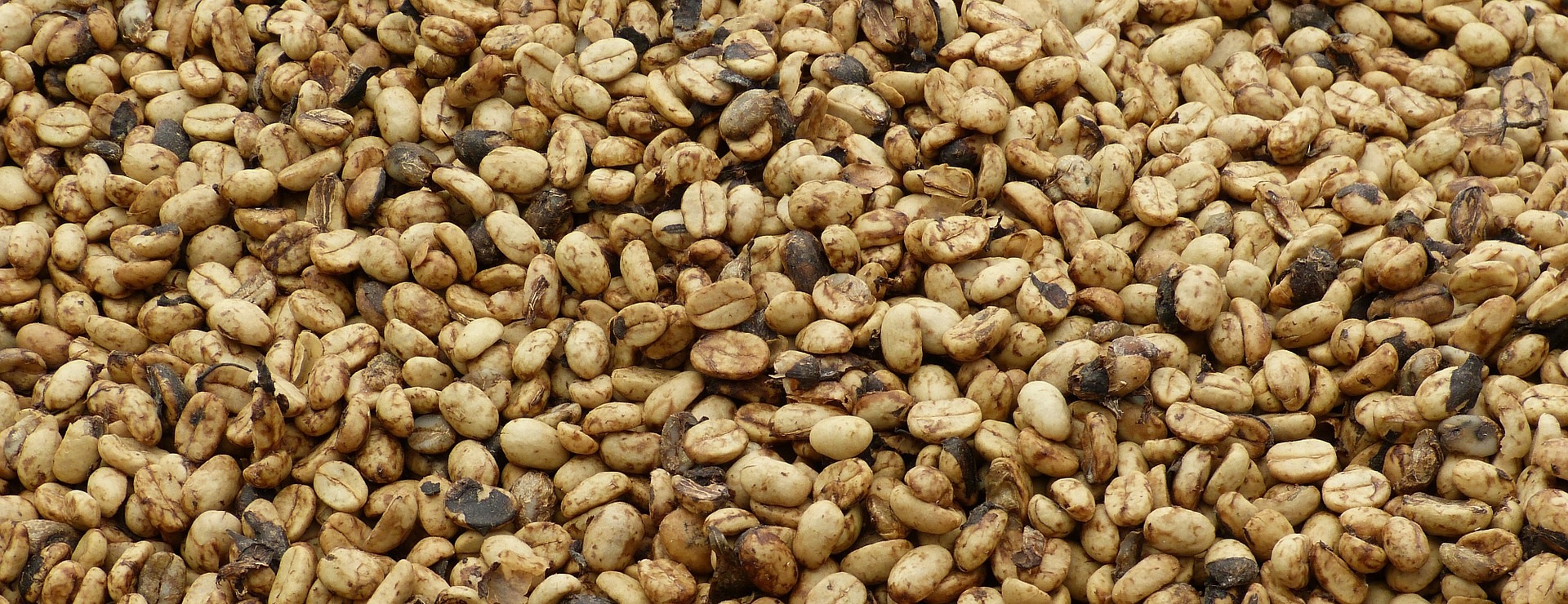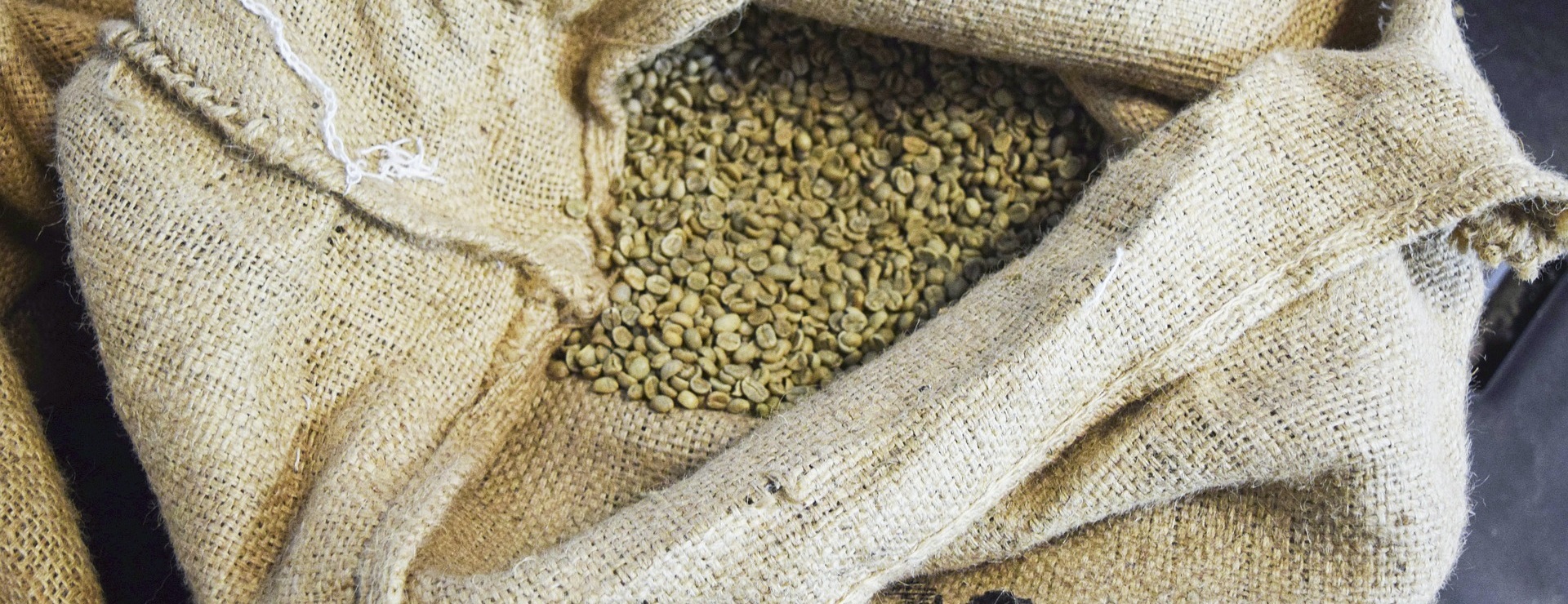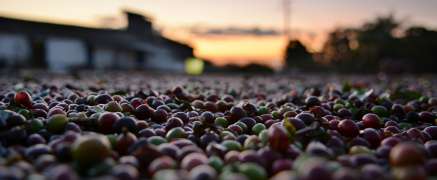For us it’s normal to brew, in half-awake, our first coffee in the morning. How much work was previously put into the beans, from coffee cultivation, coffee processing, transport and roasting, I would like to outline today. Lets start with the cultivation.
Advertisment
Coffee Cultivation
- Coffee trees need a balanced climate without temperature extremes, without too much sunshine and heat.
- The coffee cultivation areas are located according to the requirements between the turning circles.
- Coffee is usually propagated by seeds. They are sown in seedlings.
- The first two leaves of the seedling appear after 5 to 6 weeks.
- After 8 months, they are planted in the plantation, depending on the variety at intervals of 1-4 meters.
- The first yield is only after 3-5 years for 10 – maximum 20 years.
- The trees are constantly cut in height and freed from weeds, fertilized, transplanted, treated, when the for example have leaf disease and all this in often impassable terrain.
- A lot of work, because 1 tree produces in 1 year only between 500 g – 1 kg roasted coffee!

Coffee Cultivation: Picking
1-2 x a year is harvested for up to 12 weeks, because the fruits on the same shrub need different maturation.
2 coffee crops are distinguished: Stripping and Selectively Picked
- Stripping: All the coffee cherries of the plant are harvested at the same time.
- by Machine: on commercial coffee plantations like Brazil, harvesting machines are used. A fast method, which is not very gentle for the trees, and harvest ripe and immature coffee cherries together.
- By hand: It is waited until most coffee cherries are ripe and then they are stripped of the branches. The still immature cherries are later sorted out to improve the quality.
- Selectively Picked: the most time-consuming method of picking the coffee, as only the ripe cherries are picked – the immature are still left on the shrub and later picked.

Coffee Cultivation: Processing
Now the outer layers of the coffee cherries are removed. There are 3 methods: wet process, dry process or semi-dry process. The climate and the desired taste profile decides aout the best fitting process per coffee. To talk about a better quality comparing the wet to the dry process is only partially correct. From the ecological point of view, the dry process wins!
Wet Process
The coffee cherries come in special water tanks. Bad and immature fruits float on the surface of the water, the ripe coffee cherries sink downwards. The latter are pressed mechanically through a sieve or passed through a roller system in order to remove the fruit from the beans. For the removal of the remaining shell residues there are the two methods ‘ferment-and-wash’ and ‘machine-assisted-wet-processing’:
- Ferment-and-Wash Method: In fermented tanks the beans are fermented between 6 and 70 hours. There are 2 methods:
- Machine-assisted wet processing: The remaining pulp is not subjected to fermentation and is removed by machine.
After the pulp is removed, parchment and silver skins remain around the beans. For the beans to become stable, the water content must be brought to 10%. This usually happens with drying under the sun but also by machine.
Advertisment
Dry process
The dry process, unwashed or natural coffee is the oldest method. After cleaning the whole cherries are dried in the sun.
- Cleaning: Unripe, overripe, spoiled coffee cherries as well as leaves, twigs and soils are sorted out.
- Drying: The fruits that are spread under the sun are used regularly and need 3-5 weeks until they reach a moisture content of 12 % so as not to break or to spoil.
The dried coffee grinders are stored in silos and are put into the rolling mill in time for further processing.
Semi dry process
The washed coffee cherries are mechanically freed from the pulp. This saves water.
- Wet Fermentation: To remove the remaining pectin layer, the cherry is subjected to a short fermentation of up to 1 day. The mucus layer is then washed off and the parchment coffee is dried.
- Pulp Natural: After removing the pulp, the cherries are dried directly. The dried mucus layer is removed by machine.

Milling
The final steps of the coffee processing consist of removing the last layers of the dried peel and last fruit residues, cleaning and sorting.
Hulling
When dry, it is the removal of the brittle parchment skin. In the case of the semi-dry process, it is the removal of the parchment skin and the dried pectin layer, and in the case of the dry process it is the removal of the whole dried fruit husk with the help of machines.
Polishing
This is an optional processing step, which also removes the silver skins. The so-called Chaff during roasting is then omitted.
Cleaning and Sorting
- Sorting by Size and Density are done by machines that simultaneously remove styles, pebbles, and dirt.
- Photocells and UV light are used for sorting by colour in order to detect and sort immature, black or fermented beans.
Grading / Classification
Finally, the coffee is divided into grades, chopped and stacked in cool, airy storage halls protected from direct daylight. Then they are traded and reach the roasters.
- Size: in Africa and India: AA> A> B> C <PB (Peaberry). In Central America: Superior, Primera, Tercera, Caracol and Caracolito.
- Altitude: from 1,600 m: SHB (Strictly Hard Bean) / SHG (Strictly High Grown), 1,200 – 1600 m: HB (Hard Bean)
- Quality: Determines the percentage of deficient beans. According to the SCAA classification one differentiates:
- Specialty green coffee beans: less than 6 full defects in 300 g of green coffee.
- Premium Coffee Grade: less than 9 full defects in 300 g.
- Exchange Coffee Grade: less than 23 full defects in 300 g.
- Below Standard Coffee Grade: less than 86 defects in 300 g.
- Off Grade Coffee: more than 86 defects in 300 g.

Trade, Transport and Storage
- The price depends on the quality of the raw coffee varieties, the supply and demand as well as the stocks of the production and consumption countries. The main species of Arabica and Robusta are traded on the international coffee exchanges in New York and London.
- 80% of the coffee is shipped as loose bulk goods in containers into the import countries.
- High-quality green coffee with low harvest volume is still shipped in bags (in the container). From South America to Hamburg or Bremen it takes about 2-3 weeks.
- Having arrived at the port, stockholders are picking specimens to proof quality deviations or register damage.
- The coffee beans are either poured from the containers or bags directly into silos or stored in sacks stacked in pallets on storage pallets.
- illustration of the German Coffeeshop >>
- Before the raw coffee arrives at the roaster, there may be many intermediate steps in services. Roasters, which focus on Direct Trade, try to minimize this. >>

Roasting
Since raw coffee tastes more like peas, the beans are roasted. This gives the coffee its specific colour, taste and flavour. During this roasting, the beans will lose 60 % volume but at the same time 20 % weight. Also the coffee variety, origin and quality of the raw coffee beans, as well as the roasting time and temperature, determine the result. The longer roasted at low temperature, the higher the roasted coffee quality, since more incompatible chlorogenic acid is degraded and more aromas are built up.
One can devide the roasting process into different phases by means of sensory characteristics of the beans. The appearance and the volume of the beans plays an important role. The clearest signal, however, is the noise of the first or second crack of the beans. Coffee roaster can recognize the aromas, acidity, taste and body the coffee will have in the cup later, and so creating the desired coffee. Call it a science!
Bright roasts result in a rather sour, but less bitter taste, while darker roasts are slightly sweet but bitter. Depending on the type, quality and desired result, the roaster decides on the degree of roasting. >>
In general, one distinguishes between industrial hot-air roasting and traditional drum-roasting. linked article >> both methods are compared.
>>
roaster overview for Germany >>
Advertisment
For advertising links on this page the dealer may pay a commission. These advertising links are marked with an asterisk (*) – images and banners are marked with “Ads” or “Advertisment”. There are no costs for you. Find more information in the data protection regulations here.











